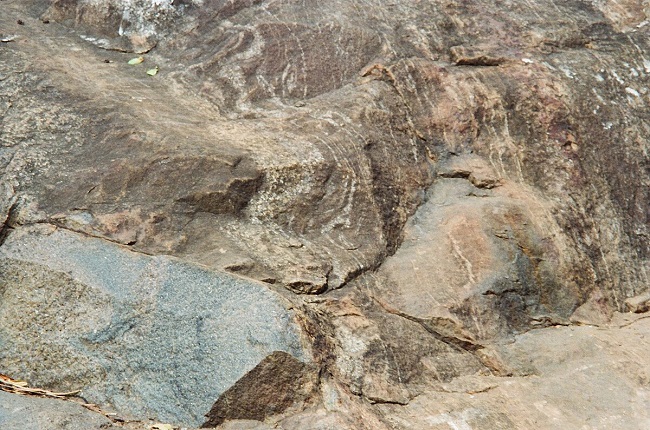St. Thomas Mount’s Hidden Treasures- The Charnockite wonder
Charnockite, St. Thomas Mount
Charnockite, St. Thomas Mount, located to the south of Chennai city, in the Pallavaram suburb, Tamil Nadu, is a characteristically typical exposure of feldspar, quartz, and hypersthene minerals bearing rocks. The name “Charnockite, St. Thomas Mount” originated from the use of the rocks quarried from a central band in St.Thomas Mount for the tombstone of Job Charnock, the founder of Kolkata in 1686. Several incidents in Charnock’s life are linked to Charnockite Rock, Chennai City, and St. Thomas Mount.
National Geological Monument
In 1975, the Geological Survey of India declared “Charnockite rock of St. Thomas Mountain” as a Monument in memory of Job Charnock for whom the stone from this hill, (The stone at that time known as Pallavaram Gneiss) was shipped to the Calcutta building his tomb. Since then “Charnockite” is also prefixed with the famous “St. Thomas Mount”.

Job Charnock, a servant and administrator of the English East India Company, is credited for founding the city of Calcutta in 1686, 50 years after the city of Madras was founded.
St. Thomas Mountain, Chennai
St. Thomas Mountain is a small hillock located in Chennai, Tamil Nadu, India. It is known for its historical and religious significance. St. Thomas Mount in Chennai was named by Sir Thomas Holland of GSI as Charnockite in 1893 to honor Job Charnock, the founder of Kolkata.
Religious Significance- St. Thomas Mountain is associated with St. Thomas, one of the twelve apostles of Jesus Christ. According to tradition, St. Thomas is believed to have been martyred on the mount in 72 AD. There is a small church on top of the mountain, known as St. Thomas Mount National Shrine, which attracts pilgrims. There are remnants of a fort on the mount that the Portuguese built in the 16th century.
Geology of St. Thomas Mountain
St. Thomas Mountain, geologically, is known for the presence of charnockite rocks. Charnockite is a specific type of granulite that often contains minerals such as quartz, feldspar, and mafic minerals like amphibole and pyroxene. The formation of Charnockite is associated with high-temperature metamorphism.
Charnockite rocks at St. Thomas Mountain typically exhibit a coarse-grained texture due to the recrystallization of minerals under high-temperature conditions. The presence of minerals like garnet, hypersthene, and biotite is common in charnockite.
It is named after the British geologist Job Charnock and is characterized by its distinctive mineral composition and texture. Here are some key features of charnockite:
Occurrence: Charnockite is often found in continental shields, which are ancient stable areas of continents. It is associated with regions of high-grade metamorphism. Charnockite outcrops have been identified in various parts of the world, including southern India, Sri Lanka, Madagascar, and parts of Antarctica.
Geological Significance: Charnockite provides important insights into the geological history of a region. Its presence indicates episodes of intense heat and pressure during the Earth’s history, leading to the metamorphism of existing rocks.
Also, read- A Most Beautiful Waterfall near Chennai-Ubbalamudugu WaterFalls
How to reach Charnockite, St. Thomas Mountain
Thomas Mount is a geographical location associated with a hill in Chennai. The nearest airport is Chennai International Airport, which is well-connected to major cities in India and other international destinations.
You can hire a taxi from the airport or use other local transportation to reach St. Thomas Mount, approximately 5 kilometers away. St. Thomas Mountain is well-connected by road and Railway network. There is a railway station named “St. Thomas Mountain Railway Station” in the vicinity.



